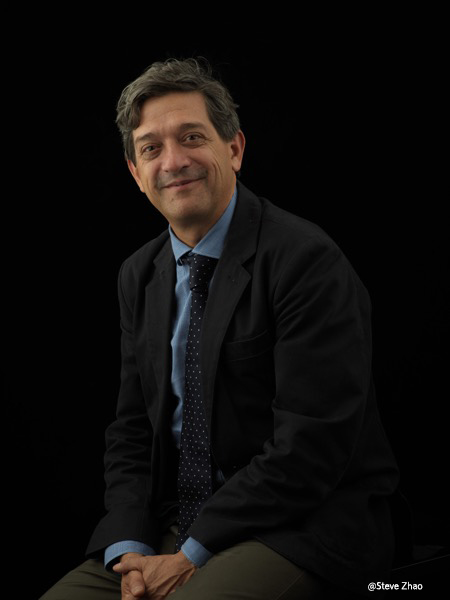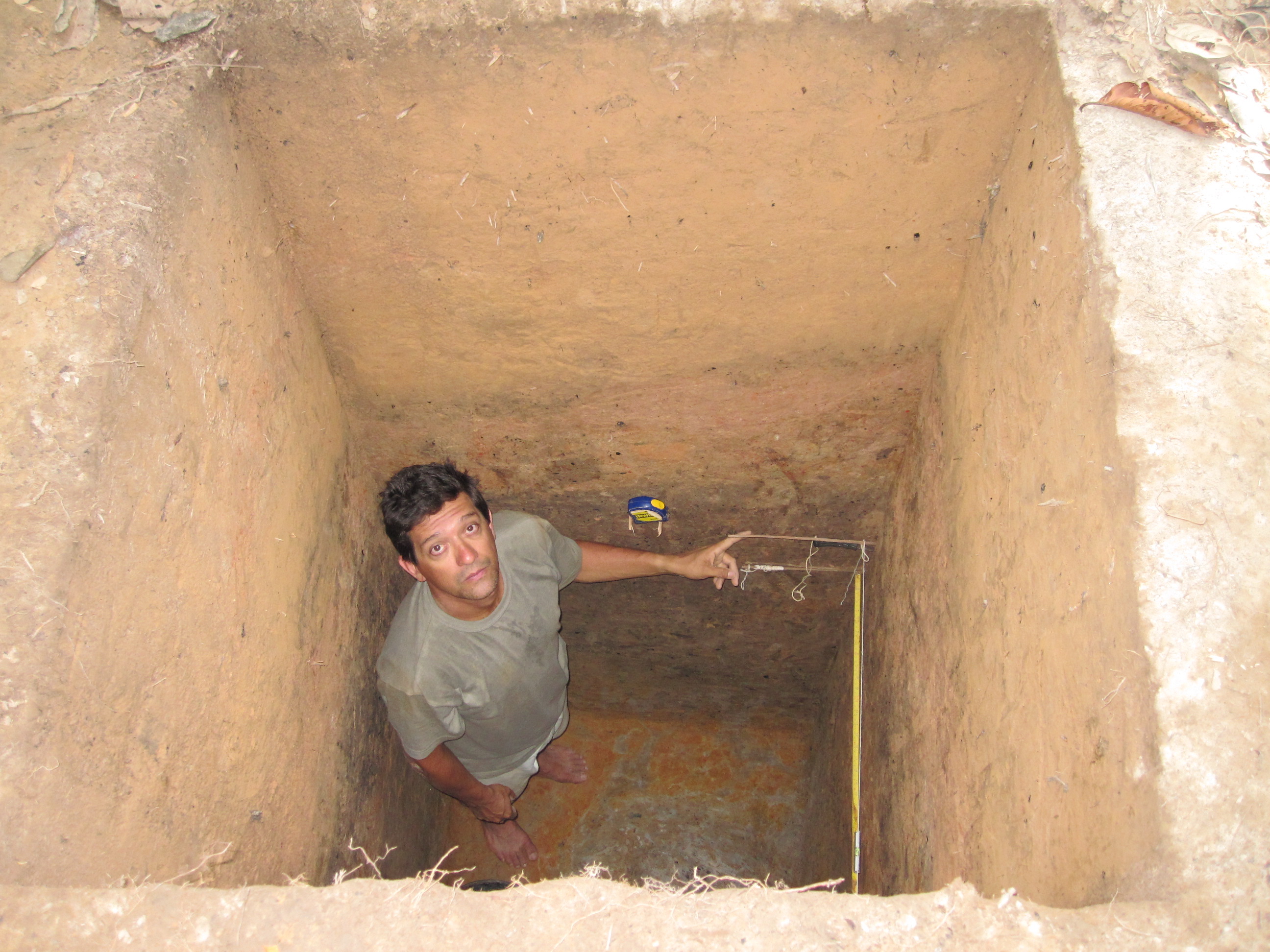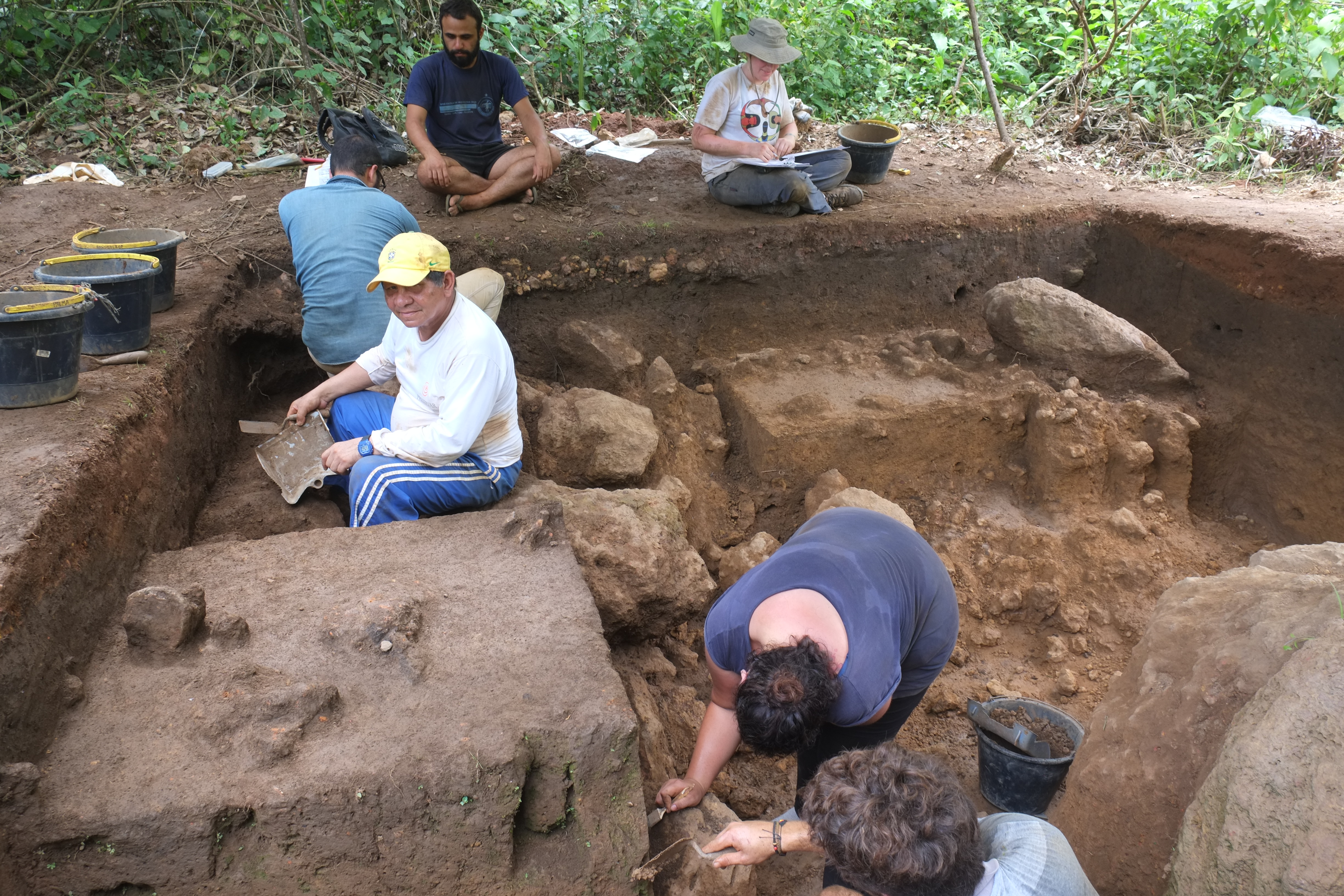远非原始:亚马逊对世界考古学的启示
Far from pristine: what lesson can Amazonian archaeology teach to world archaeology?
爱德华·奈维斯 Eduardo Neves
(巴西圣保罗大学 University of São Paulo)
对亚马逊生物群及其民族的研究对现代科学的发展起到了重要作用。自19世纪初以来,西方学者就跟随亚历山大·冯·洪堡在热带地区踏查,寻找诸如生物多样性的出现等更深层次问题的答案。另一方面,多年来,热带雨林一直保持着一种原始环境的形象,似乎数千年来几乎未被人类开发。以上观点被转化为现代公共政策以解决这些地区的开发使用问题,而背后往往存在巨大的社会和生态隐患。
16世纪早期,当欧洲人到达南美洲时,他们在安第斯高地遇到了中央集权和等级森严的社会,如印加帝国。纪念性建筑存在的证据在安第斯山脉和太平洋沙漠海岸地带都很常见,这些证据同样被用来重建南美洲的古代史,直至今日依旧是一个有力的论证:即认为干旱的太平洋海岸和安第斯高地是南美文明的摇篮,而热带低地在人类对该大陆的活动中起着次要作用。
人们假设在古代,潮湿热带地区的生态条件不利于建立大型的、定居的甚至是永久的聚落,进一步加强了前述观点。根据这种观点,缺乏陆生动物蛋白或肥力低下的土壤广泛分布等环境因素会对人类在此地活动造成很大的限制,并阻碍建立长期和稳定的居址。
过去的几年里,在亚马逊的研究对改变这种理解功不可没,而我自己的工作也在这种批判中发挥了作用。越来越清楚的是,在欧洲人到来的时候,亚马逊地区人口密集,当地的社会展示了各种各样的社会和政治组织模式。在古代的安第斯山脉地区,如果岩石常被用作纪念性建筑的原材料,那么土壤在亚马逊的建筑中就发挥了相应的作用。因此,直到最近考古学家才认识到,沟渠、河道、土建筑、森林覆盖下的土丘都是古代亚马逊人建造的。这些新的证据表明,亚马逊也是早期文化发展的摇篮,但它的古代社会有着与先前假设不符的历史。因此,我们需要一种有别于传统类型学的新理论,以及吸收了这些最新发展重新整合的世界考古学。
我对改变亚马逊考古学传统观点的贡献源于我自己在该地区长期田野项目的直接参与。上世纪90年代初,当我刚开始读研时,很少有人对亚马逊地区考古感兴趣。因此,当我设计博士论文课题,打算对亚马逊西北部的图卡诺安印第安人进行考古研究时,我不得不在没有大量田野工作人员支持的情况下从零开始。如今,在指导了30多篇硕士和博士论文之后,我不确定这对我来说是否是一个更好的决定,但这是当时那些少数愿意在亚马逊地区工作的考古人的唯一选择。
在一个方圆几百公里内没有开展过任何考古工作的地区独自工作的不利之一是一切都需要从头开始:没有可用的年表,没有遗址地图,没有聚落形态的数据,以及没有或是只有极少的训练有素的同行一起合作。在亚马逊丛林的西北地区,由于没有道路,人们出行只能靠乘船或步行,所以经常会出现延误,因此人们必须灵活安排时间和制定目标。另一方面,与图卡诺人一起工作,分享他们蕴含在的幽默感中的卓越智慧,也是一种独特的经历。(图片为在亚马逊西北部旅行)。
从1995年到2010年,我与迈克尔·何肯伯格和詹姆斯·彼得森联合负责了亚马逊中部地区的考古项目,在那里,几个大型遗址首次被持续多年发掘,来自巴西和国外的学生和专业人员都参与其中。大部分年度的发掘也作为田野学校的训练,以便锻炼下一代年轻的巴西和外国考古学家。从1999年到2000年,我在亚马逊中部直接或间接地指导了8届田野学校。规模最小的在1999年,有11人,最大的在2007年,有57人。许多参加过田野学校的学生目前都已在巴西、美国和英国的大学任教,他们自己也组织类似的田野学校(图片为亚马逊中部的田野考古学校)。
我在亚马逊中部的考古研究中最重要的科学成果是系统地测绘和发掘了几处遗址,地层沉积物是黑色的高肥力土壤,被称为黑土或人造黑土。它们的生产力、几乎中性的pH值和稳定性与这一广大地区通常发现的脱盐和酸性土壤形成了鲜明对比。虽然自19世纪以来,人们就知道人为黑色土壤的存在,但直到最近,人们才接受了它与人类过去活动相关。因此,它们的广泛分布为亚马逊生物群已被过去的土著人改造过提供了最好的证明,从而反驳了固定的环境会限制阻碍人类在此长期活动的观点。我们能够证明,尽管更早时期的部分地区发现有这种土壤存在的证据,但从公元前500年起,整个亚马逊地区发生了一场全面的社会变革,导致了人造黑色土壤的发展。(图为亚马逊中部拉吉尼奥遗址发掘的人为黑色土壤剖面)
从2009年起,我把大部分的田野研究从亚马逊中部地区转移到位于玻利维亚和巴西边境的亚马逊西南部地区。造成这种变化的原因有两方面。首先,之前有证据表明,该地区的考古记录跨越了整个全新世,这为了解该地区景观转变的长期过程提供了一个有利的机会。第二是因为这个地区现在被认为是世界上独立的植物驯化中心之一。亚马逊西南部是一个主要的初级和次级植物驯化中心。作为初级驯化中心,遗传资料显示,桃树棕(Bactris gasipaes) 和树薯(Manihot esculenta)以及一些不同种类的花生(Arachis hypogea)、红辣椒(Capsicum baccatum)、芋艿 (Xanthosoma spp)和胭脂木(Bixa orellana) 最初都是在这里种植的。直接的考古证据显示了水稻(Oriza glumepatula)的种植始于公元前2200年,兰花蕉(Calathea allouia)、巴西胡桃(Bertolethia excelsa) 和番石榴(Psidium guajava) 的种植则始于全新世早期(Watling et al. 2018)。次级中心的作用是由遗传数据证实的,多个玉米品种从中美洲引进南美洲后在此处发展,随后在6000年前传到南美洲低地。根据语言和语系推断,亚马逊西南地区也是一个主要的文化多样性中心。大亚马逊地区是现代世界语言多样性最丰富的地区之一,大约有300种语言被归为50个不同的“系谱单位”,这些“系谱单位”可能是残余语系,也可能是孤立的语言。仅在亚马逊西南地区,就有超过50种语言,其中11种是孤立的,其余的分为8个语系。
我在亚马逊西南地区的工作有不同的目标。我一直在特奥托尼奥和蒙特卡斯特罗这两个遗址进行长期发掘,这两个遗址都存在横跨全新世大部分时间的人类活动遗存。我也一直努力将全新世晚期遗址的发掘与阿克里州的土丘遗址和线性道路网关联起来。
特奥托尼奥是一个多元素的遗址,文化堆积达400厘米深(图为特奥托尼奥),位于亚马逊河最大的支流马德拉河南岸。在那里的工作使我们发现了最早的人为黑色土壤,可以追溯到公元前3500年。但是人类活动的痕迹可以追溯到公元前7000年。结合早期黑色土壤的证据,我们的研究已经辨认出至少7种不同的文化因素,其中2种与全新世早期和全新世中期的石器工业有关,5种与不同的陶器文化组合有关。我们的工作还证明了一个至少可以追溯到公元前3500年的植物管理过程,包括培育兰花蕉(Calathea allouia)、巴西坚果(Bertolethia excelsa)和番石榴(Psidium guajava) 等品种。
蒙特卡斯特罗是一个河漫滩上的贝丘遗址,位于瓜波雷河洪泛区周期性泛滥的稀树草原上(图为蒙特卡斯特罗遗址)。该遗址是一个6米高、160米长的人工椭圆形平台,始建于大约公元前5000年,一直使用到公元前2000年。该遗址在20世纪80年代被发掘,然后在2013年被我们重新发掘。贝丘中的碳酸盐使得蒙特卡斯特罗遗址成为一个具有特殊保存条件的深层分层遗址,有机物得以保存,包括公元前2200年左右的人类墓葬。我们在那里仍在进行的研究成为了迄今为止水稻(Oriza glumepatula) 在美洲驯化的唯一证据。
我在阿克里州东部的研究主要集中在公元一千纪初的环境调查。在这个地区,近期的森林砍伐已经揭露了数百处遗址,它们由几何形状的土建筑和围绕中心广场的几组土丘构成。我们的工作表明,这些土丘遗址由遍布该地的线性道路网络相连,而直至40年前人们依旧认为此地是一片原始森林。我们结合植物考古和古生态研究,旨在揭示与道路和土丘建筑相关的景观变化模式。
我研究的中心焦点一直是理解亚马逊当地土著人和环境之间深刻而古老的联系。目前为止的结果出乎意料,也最具挑战性:我们有早期植物驯化的证据,也发现未经驯化植物被广泛种植数千年,我们发现了肥沃的人为黑土,但是他们最初的形成似乎与有意改善土壤肥力并无关系,我们看到建立起的贯穿始终的遗址网络,在森林中由道路相连,但并不存在大规模的森林砍伐现象。这些结果与上个世纪考古学所建立的公认叙述并不相符。这些叙述会使得亚马逊丛林这样的地区在人类进化中处于边缘地位。20年前,我会看着我的研究结果,把它们解释为在田野或实验室工作中缺乏完善的程序,就好像我们所做的研究是错误的。如今,亚马逊考古正成为一个国际化的知识领域,当地学者扮演着重要的角色。我相信,我们正在揭示的数据促使考古学发展出新的思想,对诸如“新石器时代”、“驯化”和“城市”等概念提出质疑。这些数据也挑战了将热带地区贬为人类历史发展进步中的边缘地带的古老观念。这些观点在过去被人们接受并转化为公共政策,对当地传统社会和环境造成了灾难性后果。考古学有能力改变这些观点,并揭露它们的政治性本质。
考古学正经历着激动人心的时代,因为这门学科变得更加多样化和去中心化,并提出了解读过去的不同观点。我相信,今天我们所做的研究比以往任何时候都更有意义,我很高兴成为其中的一部分。
个人简历
爱德华·奈维斯是巴西圣保罗大学考古学和民族学博物馆的巴西考古学教授。他在巴西圣保罗大学获得历史学学士学位,在美国印第安纳大学获得人类学硕士和博士学位。他是巴西考古学会的前会长,也是美国考古学会的理事会成员。他曾担任阿根廷布宜诺斯艾利斯大学、厄瓜多尔瓜亚基尔理工学院、巴黎国家自然历史博物馆和哈佛大学考古人类学系的客座教授。发表论文100余篇,指导硕士、博士论文30余篇。
The study of Amazonian biomes and their peoples have an important role in the development of modern science. Since the early eighteenth century, with Charles de la Condamine, western scholars have roamed the tropics in search for answers to deeper questions such as the emergence of biological diversity. On the other hand, tropical rainforests have retained, over the years, an image of being pristine environments scarcely occupied by humans over the millennia. Such perspectives translate into modern public policies for the occupations of these areas, frequently with large social and ecological problems.
In the early sixteenth century AD, when Europeans arrived in South America, they were confronted in the Andean highlands by centralized and hierarchical societies such as the Inka Empire. The evidence of monumental architecture, also abundant in the Andes and in the desert coast of the Pacific Ocean, was likewise employed to establish a picture of the ancient history of South America that remain strong until the present: the notion that the arid Pacific coast and the Andean highlands were cradles for civilization, whereas the tropical lowlands had a peripheral role in the human occupation of the continent.
Such perspective was further reinforced by the hypothesis that the ecological conditions of the humid tropics would be inimical to the establishment of large, sedentary and permanent settlements in the past. According to such view, environmental factors such as lack of terrestrial animal protein or the widespread distribution of nutrient-poor soils would impose a ceiling with strong limitations for human occupation and prevent the establishment of long-term and stable occupations.
In the last years research done in the Amazon has contributed to change this picture, and my own work has had a role in such criticism. It is becoming clear that the Amazon was densely settled at the time of the arrival of the Europeans and that the societies that lived there displayed a wide variety of patterns of social and political organization. If, in the Andean past, rocks were widely used as raw materials for monumental architecture, in the Amazon soils filled the role of construction (Figure 1). As a consequence, only recently archaeologists have recognized that ditches, channels, earthworks, mounds covered by the forest were built by ancient Amazonians. Such new evidence shows that the Amazon was also a cradle for early cultural developments but that its ancient societies had different histories than expected by previous hypotheses. There is, therefore, room for new theories away from traditional classificatory typologies as well as a new synthesis of world archaeology that incorporates such recent developments.
My contribution to transform the traditional perspectives on Amazonian archaeology stems from my own direct engagement with long-term field projects in the area. I have also advised more than 30 Masters and PhDs students over these years. In the early 1990s, when I was starting graduate school, there were very few people interested in Amazonian archaeology. Therefore, when I designed my PhD research to do archaeology with the Tukanoan Indians in Northwestern Amazon, I had to start a project from scratch without the support of large field crews. When I started, I was not so sure whether this was the best decision for me, but it was the only choice for those few willing to work in the Amazon at the time.
One of the shortcomings of working alone in a place where virtually no archaeology has been done within a radius of several hundred kilometers is that one needs to start from scratch: there is no available chronologies, no sites mapped, no settlement pattern data and no, or very small, crews of trained archaeologists to work with. In Northwestern Amazonia, with no roads, travelling is done by boat or on foot, delays are common, and one has to be flexible with schedules, goals and targets. On the other hand, the possibility to work with the Tukanoans, and to engage with their superior intelligence and their refined sense of humor presented a unique experience.
From 1995 to 2010, I co-directed with Michael Heckenberger and James Petersen on the Central Amazon Project, where several large sites were, for the first time, excavated over multiyear field seasons and involved the participation of students and professionals from Brazil and abroad (Figure 2). Most of the field seasons were associated with field schools, allowing for the training of a whole generation of young Brazilian and foreign archaeologists. From 1999 to 2000, I supervised directly or indirectly 8 field schools in the Central Amazon. The smallest in 1999, had 11 people, and the largest, in 2007, had 57. Many of the students that went through these field schools are currently working in faculties at Universities in Brazil, the US and UK and have organized field schools themselves as well.
The most important scientific achievement of my research in the Central Amazon was the systematic mapping and excavation of several sites with matrixes composed by dark and highly fertile soils known as terras pretas or Anthropic Dark Earths (ADEs) (Figure 3). Their productivity, almost neutral pH and stability contrasts with the normally lixiviated and acidic soils found in this vast area. Although ADEs are known since the nineteenth century, only recently their association with past human activities was accepted. Accordingly, their widespread distribution provides some of the best evidence that Amazonian biomes have been modified by past Indigenous peoples and thus falsifies the idea that there are fixed environmental constraints that prevented long-term human occupation. We were able to show that ADEs developed as results of a overall process of social change that happened across the Amazon from ca. 500 BCE onwards, although there is earlier localized evidence of the production of such soils (Figure 4).
Since 2009, I transitioned from field research in the Central Amazon to Southwestern Amazonia, located at the current border between the countries of Bolivia and Brazil. The reasons for such change were twofold: First, there is previous evidence that the archaeological record of this area spans the whole Holocene, providing a unique window into the long-term process of landscape transformations there. Second, this area is accepted today as one of the independent centers of plant domestication in the world. Southwestern Amazonia was both a major primary and secondary center of plant domestication. As a primary center, genetic data shows that the Peach Palm (Bactris gasipaes) and manioc (Manihot esculenta) as well as some varieties of peanuts (Arachis hypogea), chilli peppers (Capsicum baccatum), cocoyam (Xanthosoma spp), and anatto (Bixa orellana) were initially cultivated there. Direct archaeological evidence shows the cultivation of rice (Oriza glumepatula) around 2,200 BCE, as well as ariá or lerén (Calathea allouia), Brazil nuts (Bertolethia excelsa) and guava (Psidium guajava) by the early Holocene. The role of secondary center is attested by genetic data showing that varieties of maize were developed there after being introduced from Mesoamerica and later spreading through lowland South America 6,000 years ago (Figure 5). Southwestern Amazonia is also a major center for cultural diversity as inferred by languages and language families. Language diversity in greater Amazonia is among the highest recorded in the modern world, with around 300 languages grouped into 50 distinct ‘genealogical units’ of either relict language families or isolated languages. In Southwestern Amazonia alone, there are more than 50 languages, 11 of them isolated, and the remainder are grouped into 8 families.
My work in Southwestern Amazonia involves multiple projects. I have been conducting long-term excavations at two sites, Teotonio and Monte Castelo, both with records of human occupation spanning most of the Holocene. I have also been mapping excavations of late Holocene sites associated with mounds and a network of linear roads in Acre state (Figure 6).
Teotonio is a multicomponent site with cultural deposits reaching 400 cm deep. The site is located on the southern bank of the Madeira river, the largest tributary of the Amazon. Archaeological work there has led us to identify the earliest record of ADE dating to 3,500 BCE, but the record of human occupation extends further back to ca. 7,000 BCE (Figure 7). Together with the evidence of early ADEs, our research has identified at least 7 different cultural components, 2 of them associated with the early and middle Holocene lithic industries, and 5 of them associated with different ceramic complexes. The site also showed evidence of plant management that goes back to at least 3,500 BCE and included cultivars such by ariá or lerén (Calathea allouia), Brazil nuts (Bertolethia excelsa) and guava (Psidium guajava).
Monte Castelo is a fluvial shell mound located in a periodically flooded savanna at the floodplains of the Guaporé River. The site is an artificial oval platform measuring 6 m tall and 160 m long that was built around 5,000 BCE and mostly occupied until 2,000 BCE. Monte Castelo was previously excavated in the 1980s, then relocated by us in 2013. Due to the carbonates in the shell matrix, Monte Castelo is a deeply stratified site with exceptional conditions for preservation, allowing for well-preserved organics including human burials dating back to ca. 2,200 BCE (Figure 8). Our ongoing research there has documented what is so far the only evidence of rice (Oriza glumepatula) domestication in the Americas.
My research in Eastern Acre focuses on a more recent time period, dating to the beginning of the first millennium CE. This is an area where present-day deforestation has revealed hundreds of sites composed of geometric earthworks as well as groups of mounds found around central plazas (Figure 9). Our work there has shown that such mounded sites were connected by networks of linear roads that cut across areas believed to have been a pristine forest until 40 years ago. Associated archaeobotanical and paleoecological research aim to uncover the forms of landscape transformation associated with the road and mound construction there.
The central focus of my research has always been the understanding of the deep and ancient connections between indigenous people and the environment in the Amazon. The results so far have been unexpected and most challenging: we have evidence of early plant domestication but also of widespread cultivation of non-domesticated plants throughout the millennia, we found highly fertile Anthropic Dark Earths but it looks like their initial formation was not associated to deliberate actions to improve soil fertility, we see the constitution through time of networks of sites connected by roads built within the forest but not associated with large scale deforestation. These results do not match the accepted narratives formed by archaeology in the last century. Such narratives would leave places such as the Amazon in a marginal role for human evolution. Twenty years ago, I would look at the results of my research and interpret them as lack of sound procedures in the field or laboratory, as if we were doing something wrong. Nowadays, Amazonian archaeology is becoming an internationalized area of knowledge, with local scholars taking up an important role in this field. I believe that the data we are uncovering will lead to the development of new ideas in archaeology, and call into question concepts such as “Neolithic”, “domestication” and “urban”. Such data also challenges ancient notions of development and progress that regarded tropical areas as marginal places in human history. These perspectives became naturalized and transformed into public policies with catastrophic consequences for traditional societies and the environment. Archaeology has the power to denaturalize these perspectives and show they are essentially political.
Archaeology is going through exciting times. As the discipline becomes more diversified and decentralized, alternative perspectives on the past are presented. I believe that today we are doing more meaningful research than ever before, and I am glad to be part of this movement.
Biographic Sketch

Eduardo Goes Neves is a Professor of Brazilian Archaeology at the Museum of Archaeology and Ethnology at the University of Sao Paulo (MAE-USP), Brazil. He received his B.A. in History from the University of Sao Paulo, Brazil and his M.A. and his Ph.D. in Anthropology from Indiana University, USA. He is a former President of the Brazilian Archaeological Society and served at the Board of Directors of the Society for American Archaeology. He has been visiting professor at the University of the Province of Buenos Aires, Argentina, the Polytechnic Institute of Guayaquil, Ecuador, the National Museum of Natural History, in Paris, and the Department of Anthropology at Harvard University, in Archaeology. He has more than 100 publications and has advised more than 30 Masters theses and PhD dissertations.


